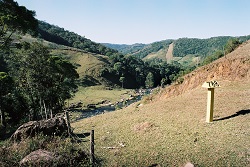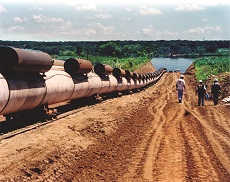A Pioneering Track Record
A Pioneering Track Record
Pioneering is our vocation
We have played an important role in the history of natural gas in Brazil.
We were pioneers in gas pipeline project finance, which consolidated our operational capacity.
We were pioneers in Brazil in the transportation of natural gas at high pressure and volume.
We are the only carrier in the country that manages its own operations and maintenance, which makes us a national benchmark for cathodic protection, operating compressors, metrology and pipeline and right of way maintenance.
We held our first public call to tender in August 2019.
We introduced an “entry and exit” contractual regime in the Brazilian market for pipeline gas transportation. We closed transportation contracts with the winning shippers in December 2019.
In 2020, we introduced a pioneering marketplace in Brazil, with the launching of the Capacity Offers Portal. We also inaugurated in 2020 the pioneering commercialization of short-term products, which enables commercial opportunities in the short-term market for natural gas and makes it possible to adapt to imbalance among the shippers, while optimizing the logistics of the transport network and adjustment to the reality of each business.
In 2020, due to the Coronavirus, we were also pioneers in the remote operation and supervision of our Gas Pipeline, with the controllers based entirely in their home office.
Our track record goes back to the 1930s, when technical studies began for the bilateral oil and natural gas commercial agreement, which led to the construction of the Bolivia-Brazil Gas Pipeline in the 1990s.
As a result, the Transportadora Brasileira Gasoduto Bolívia-Brasil (TBG) was founded on April 18, 1997 and the Bolivia-Brazil Gas Pipeline (Gasbol) began its natural gas transportation operations in 1999.
Background of the TBG Gas Pipeline project
During the construction work on the Bolivia-Brazil Gas Pipeline, which generated 25,000 direct and indirect jobs in this country, one of the first services offered by the TBG was the Linha do Gás (Gas Helpline) – still operating 24 hours a day, 7 days a week – which is a communication and transparency tool with two main functions: to monitor and supervise the performance of the site employees in relation to the communities affected by the Gas Pipeline and provide information, especially to the population close to the TBG installations, about the use of natural gas and the impact of the Gas Pipeline on their lives.
Concern with the Environment

During the construction of the Bolivia-Brazil Gas Pipeline, which generated 25 thousand direct or indirect jobs in the country, one of the first services offered by TBG was the "Gas Hotline" (still available, 24 hours a day, 7 days a week), as an important instrument of communication and transparency. During the construction, the service attended to monitoring the employees within the relation to the communities impacted by the pipeline work and informing the people living nearby TBG’s installations about natural gas benefits and the global impact of the pipeline on their lives.
Total construction cost of the Bolivia-Brazil Gas Pipeline:
US$ 2 billion (US$ 1.6 billion in Brazil and US$ 400 million in Bolivia)
Project Finance:
- BNDES/Finame - US$ 245 million
- Andean Development Corporation (CAF) - US$ 80 million
- Advanced selling of services - US$ 302 million
- Shareholder contributions - US$ 310 million
- Development and export agencies - US$ 159 million
- European Investment Bank - US$ 60 million
- IBRD loan - US$ 130 million · IDB - US$ 240 million
Concern with the Environment

Care was taken to divert the Pipeline original route to avoid the felling of forests. One of the biggest challenges was crossing the 85 km of Pantanal Sul Matogrossense. It received special attention: even work schedules were set to prevent noise interfering, for example, on bird migration. Water resources remained exactly as they were before the work: the pipes were buried in 2-meter wide trenches, at depth between 1.20 and 2.50 meters below the riverbeds. Preocupa__o com o Meio Ambiente redimensionada.jpg As the region is flat and very wet, buoys and a special concrete coating were used to facilitate the installation in the trenches, often submerged, and increase pipe weight. Thirty-two inches (81 cm) carbon steel pipes were used to ensure the daily supply estimated in 30 million cubic meters. At railway, road and river crossings, the technique of directional drilling was used. In this technique, overlapped pipes called casing pipes increase the operation safety.

